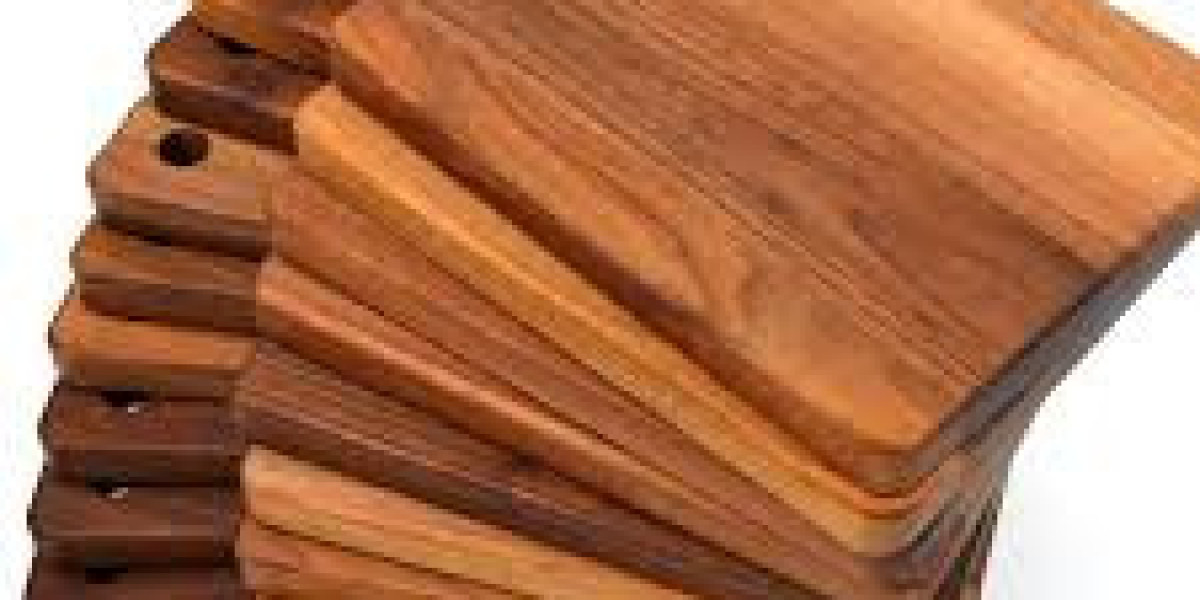In the foodservice and retail industries, cutting boards are essential tools for food preparation, ensuring hygiene, efficiency, and safety. Whether you're a restaurant owner, a supplier, or an individual seeking bulk options for a specific project, purchasing wholesale cutting boards can be a cost-effective solution. This article will explore everything you need to know about wholesale cutting boards, including the benefits, types, material considerations, and tips on making the best purchasing decisions.
Why Buy Cutting Boards Wholesale?
Purchasing cutting boards in bulk can be highly advantageous for businesses, particularly those in foodservice, hospitality, and retail. Here are several key reasons why buying cutting boards wholesale is a great option:
Cost Savings
Buying in bulk often results in significant savings per unit. Wholesale suppliers offer lower prices because of the larger order volumes, making it an attractive choice for businesses looking to reduce operational costs.Consistency in Quality
When purchasing wholesale cutting boards from a reputable supplier, you can be assured of consistency in both quality and size. This is important for businesses that need uniformity in their kitchen equipment.Availability and Convenience
Wholesale suppliers typically maintain large inventories, which means they can deliver the quantities you need without delays. Whether you need a few hundred or a few thousand cutting boards, they can be sourced quickly and efficiently.Customization
Many wholesale cutting board suppliers offer customization options. Businesses can choose different sizes, shapes, and colors of boards, or even add branding or logos to ensure their tools align with their company image.Durability
High-quality wholesale cutting boards are built to last, and buying in bulk ensures that you have a steady supply to replace worn-out boards in a timely manner.
Types of Cutting Boards Available Wholesale
Cutting boards come in various shapes, sizes, materials, and designs to meet different needs. Below is a breakdown of the most common types of wholesale cutting boards:
1. Wood Cutting Boards
Wooden cutting boards are a classic choice due to their durability and aesthetic appeal. They are gentle on knives, preventing excessive wear, and they add a touch of rustic charm to any kitchen. Common types of wood used for cutting boards include:
Maple: Known for its durability and resistance to knife marks, maple is a popular choice for both professional chefs and home cooks.
Cherry: This wood has a rich, reddish-brown color that deepens over time, making it an attractive choice for high-end kitchens.
Bamboo: Although technically a grass, bamboo is eco-friendly and has become a popular alternative to traditional hardwood.
Wood cutting boards are typically used in high-end restaurants, bakeries, and specialty food shops.
2. Plastic Cutting Boards
Plastic cutting boards are highly versatile, affordable, and easy to maintain. These boards are non-porous, meaning they won’t absorb liquids, bacteria, or odors. They are also dishwasher safe, making cleaning a breeze. The most common types of plastic used for cutting boards include:
Polyethylene: A standard option for many foodservice businesses due to its affordability and durability.
Polypropylene: Known for its heat resistance and sturdiness, this type is often used in commercial kitchens.
Plastic cutting boards come in a range of colors, which allows businesses to color-code them for different tasks, such as meat, vegetables, and seafood.
3. Glass Cutting Boards
Glass cutting boards are sleek, modern, and easy to clean. However, they tend to dull knives faster than wood or plastic boards, and they can be more prone to chipping or breaking when dropped. As a result, glass cutting boards are less commonly used in busy kitchens but may be a great option for retail displays or decorative purposes.
4. Rubber Cutting Boards
Rubber cutting boards are a soft, flexible alternative to wood and plastic. These boards are knife-friendly and help keep knives sharp longer. They're also non-porous and resistant to cuts and abrasions, which makes them an ideal choice for professional kitchens. Rubber cutting boards come in various thicknesses and can withstand heavy use without warping or cracking.
5. Composite Cutting Boards
Composite cutting boards are made from a mixture of materials such as wood fibers, resin, and plastic. These boards are durable, resistant to knife marks, and offer the benefits of both wood and plastic. They are also eco-friendly and non-toxic, making them an excellent choice for environmentally-conscious businesses.
Key Considerations When Buying Wholesale Cutting Boards
When purchasing wholesale cutting boards, there are several important factors to consider. These considerations will help ensure you choose the right boards for your business needs:
1. Size and Thickness
The size of your cutting board should be determined by the space available in your kitchen and the type of tasks it will be used for. Cutting boards come in a range of sizes, from small boards for quick prep work to large boards for heavy-duty cutting. Ensure that the thickness of the board suits your specific needs, as thicker boards are generally more durable and provide greater resistance to knife marks.
2. Material Suitability
Consider the materials that are best suited for your specific use case. For example, restaurants that handle raw meat may prefer plastic cutting boards because they can be easily sanitized and color-coded to avoid cross-contamination. Wooden boards may be better for specialized food items like bread or cheese.
3. Ease of Maintenance
Cleaning and maintaining cutting boards can vary depending on the material. Wooden boards require oiling to prevent cracking and warping, while plastic and rubber boards are dishwasher safe. Consider the maintenance requirements based on your business's available resources and cleaning routines.
4. Durability and Longevity
The durability of the cutting board is crucial for businesses that need to rely on these tools day in and day out. While wood boards are aesthetically pleasing, they can be prone to scratches and dents. Plastic and composite boards are more durable in high-volume settings and often last longer.
5. Safety Features
Look for boards that feature non-slip grips or feet. These safety features help prevent the board from sliding during use, reducing the risk of accidents in busy kitchens. Some boards also come with juice grooves, which can help prevent liquids from spilling onto the counter.
6. Eco-Friendliness
For businesses concerned about sustainability, there are numerous eco-friendly options available. Bamboo and composite boards are great choices for businesses aiming to reduce their environmental impact.
Tips for Purchasing Wholesale Cutting Boards
Research Suppliers: Make sure to buy from a trusted wholesale supplier that specializes in high-quality kitchenware. Look for customer reviews, product certifications, and a good track record in the industry.
Request Samples: Before making a bulk order, request samples to test the quality, durability, and functionality of the cutting boards.
Negotiate Pricing: Depending on the quantity, there may be room for negotiation on pricing, especially if you plan to make large or repeat orders.
Consider Storage: Be mindful of where you'll store the cutting boards. Ensure you have adequate space to handle large orders and that the boards are properly stored to avoid damage.
Conclusion
Wholesale cutting boards are an essential item for businesses in the foodservice, hospitality, and retail industries. By purchasing cutting boards in bulk, businesses can enjoy cost savings, consistent quality, and the convenience of large inventory orders. When selecting cutting boards, consider factors such as material, size, and durability to ensure you choose the right product for your needs. Whether you opt for wood, plastic, rubber, or composite, wholesale cutting boards offer a practical and reliable solution to support your business’s daily operations.








